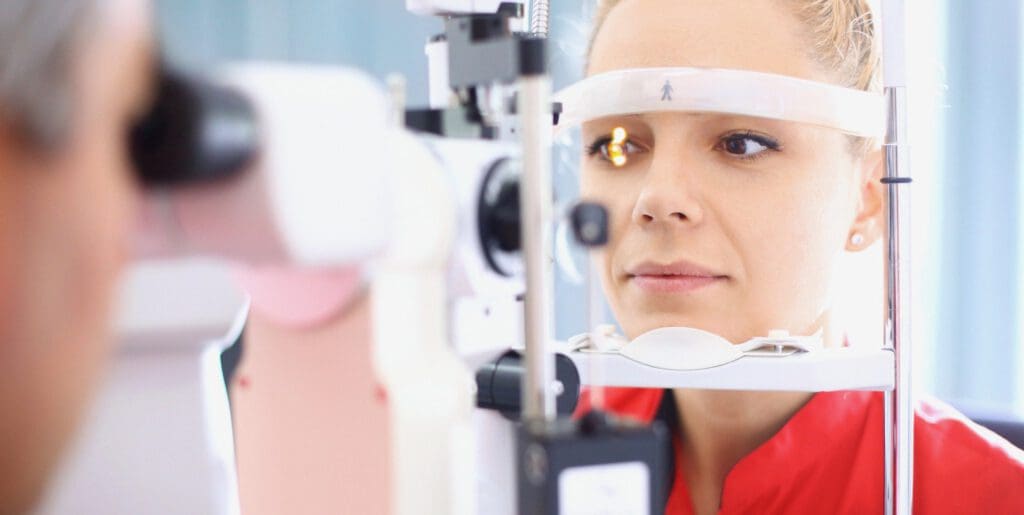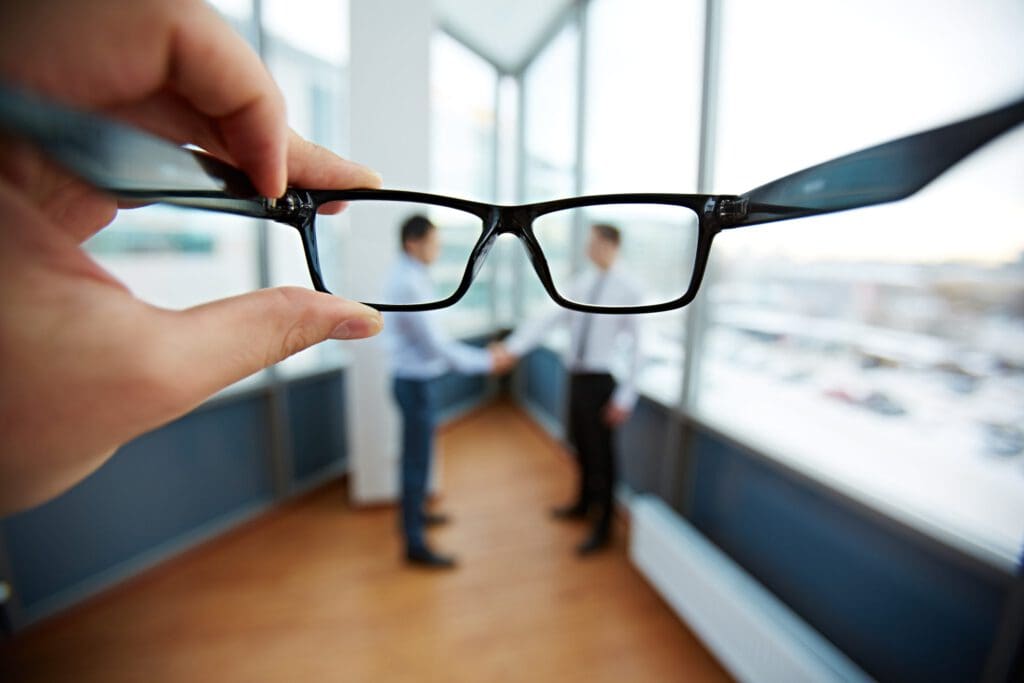Why Would Eye Test Be 20 40 One Time Then 20 20 Then 20 40 Again
Only a doctor can measure your visual acuity. The test is quick and painless, and the results are expressed as a ratio. If your score is 20/40, you must be 20 feet from things that people with "normal" vision can see clearly at 40 feet to have the same experience.
A 20/40 score is less than perfect, but life with this visual acuity is not generally difficult. In some states, you can drive with a 20/40 score and no correction at all. But it can make things like reading on a chalkboard tough at times.
To amend your vision, doctors can use glasses, contacts, surgery, or a combination of all three. You will work with your doctor to decide what method works best for you and your lifestyle.

How Well Can You See?
Doctors use precise tools to measure your visual acuity, and your score is expressed as a ratio. If you score 20/40, you will see an image clearly when it's 20 feet from you, while someone with normal vision will see it when it's 40 feet from them.
It's tempting to use a DIY tool like a phone app to measure your visual acuity. Researchers say, however, that there are no phone apps or similar technology that can measure your vision as well as a doctor can.
To test your acuity, your doctor will:
- Cover one eye. They will check each eye individually, as it's not uncommon to see better in one eye than the other.
- Drop down a chart with letters. You will call out the line of letters you can read clearly.
- Adjust with lenses. Your doctor will pop a correction in front of your eyes to help you see clearer.
- Repeat. You will go through these steps over and over again until you can see clearly.
It's not clear how many people have 20/40 vision. But scores can vary dramatically from person to person. If yours is 20/40, you are certainly not alone.
Life With 20/40 Vision
A 20/40 score is not perfect. Other people have better visual acuity than you do. But this is not the worst possible score. You might find you can live with this score even if you never have it corrected or amended.
The American Academy of Ophthalmology reports that people in most states can drive without glasses or contacts with a 20/40 test result. You may not see road signs as clearly as someone with 20/20 vision, but you are still considered a safe driver with this score.
But even so, a score of 20/40 can make some activities difficult. As the Centre for Vision in the Developing World points out, a 20/40 score can make reading text on a blackboard tough. You might also find it hard to:
-
- Watch movies with subtitles.
- Read a menu posted on the wall of your favorite coffee shop.
- See tiny type on a recipe as you cook.
- Discern flight details at the airport.
For some people, these issues are mildly annoying. For others, they are deal-breakers.

If your vision score is 20/40, you do not have to live with it. Your eye doctor can help to sharpen your vision. Since there are many ways to correct a vision deficiency, you and your doctor can talk about what solution works best for you and your lifestyle.
It's critical to talk about your vision with your doctor. Researchers connected poor sight with lowered quality of life all the way back in 2006. There is no reason to endure the issue when there are solutions available.
Your doctor may talk with you about:
- Glasses. If you need to sharpen your vision occasionally (while driving, for example), but you do not need the help all the time, glasses are a good choice. They are easy to take on and off, and they do not require much maintenance. In addition, researchers say people wearing glasses are 30 percent less likely to experience a major depressive disorder when compared to those that do not.
- Contact lenses. These vision tools require maintenance, including washing your hands, disinfecting the contacts, and replacing them when needed. But for some people, including a few prominent bloggers, they are ideal. They do not fog up, crack, or slide down your nose, and they are easy to ignore. Choose this option, and you will have correction almost around the clock.
- Surgery. Techniques like LASIK involve reshaping your eye, so light moves through uniformly and sharpens images before they hit the retina. Some people need reading glasses after LASIK, especially as they age, but many people appreciate the freedom that comes with a surgical solution.
The right choice for you depends on your lifestyle, your income, and your personal preferences. Your eye health can also play a role. For example, if your eyes are very dry and your doctor can't help you solve that problem, both contacts and LASIK could be uncomfortable for you.
An open and honest talk with your doctor is the best way to ensure that you get the solution you love, so you can see as clearly as you'd like to.
References
The Eye Phone Study: Reliability and Accuracy of Assessing Snellen Visual Acuity Using Smartphone Technology. (2015). Nature.
What Does 20/20 Vision Mean? (November 2016). American Academy of Ophthalmology.
Who Needs Glasses? What Do They Need Them For? (August 2016). Centre for Vision in the Developing World.
Assessing the Impact of Visual Acuity on Quality of Life in Individuals with Type 2 Diabetes Using the Short Form 36. (July 2006). Diabetes Care.
People Who Wear Glasses Really Are More Likely to Be Smart Says Huge Study. (May 2018). Science Alert.
Why I Hate Glasses. (September 2015). The Awl.
The information provided on this page should not be used in place of information provided by a doctor or specialist. To learn more, read our Privacy Policy and Editorial Policy pages.
Source: https://www.nvisioncenters.com/education/20-40/
0 Response to "Why Would Eye Test Be 20 40 One Time Then 20 20 Then 20 40 Again"
Post a Comment